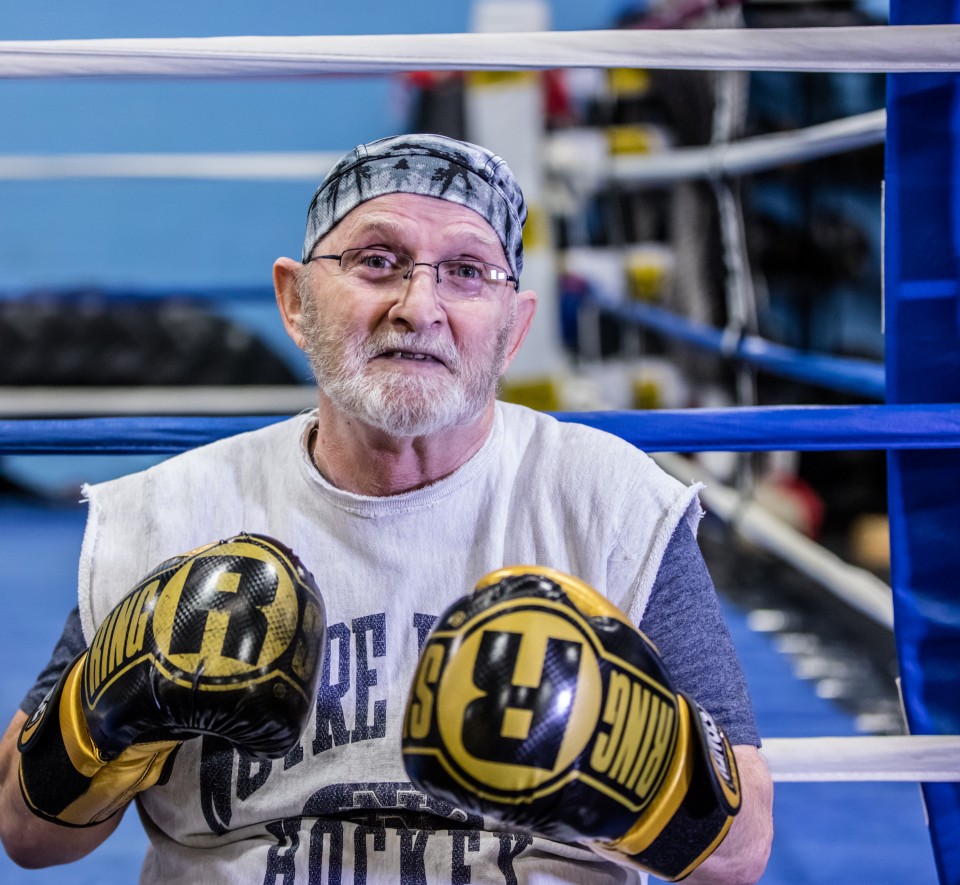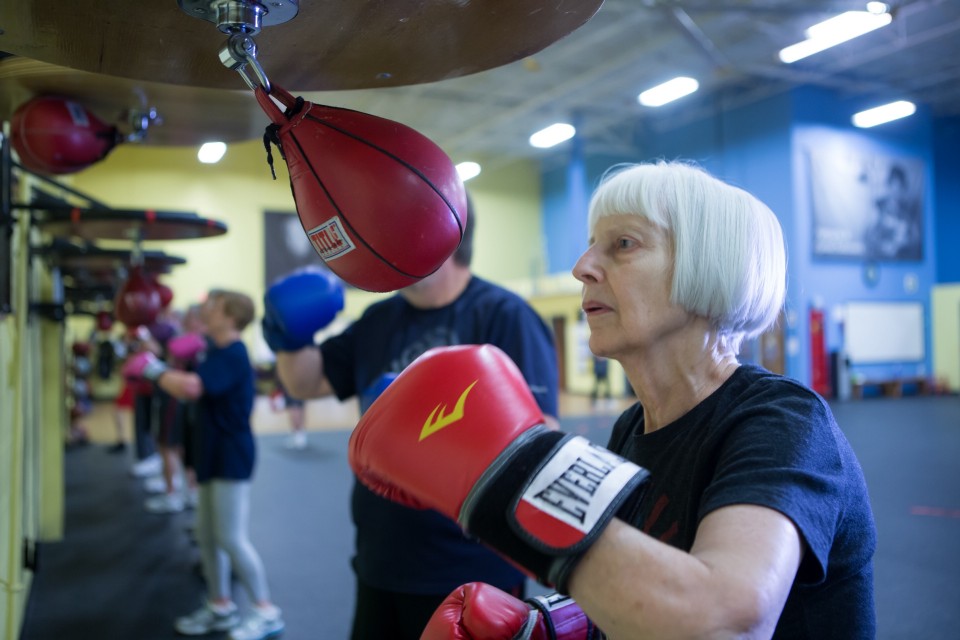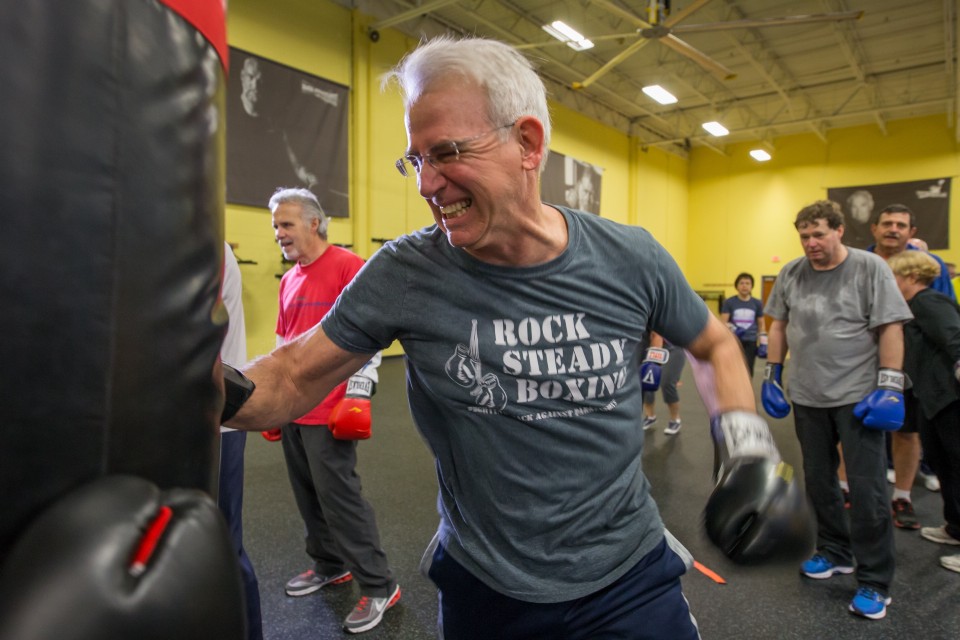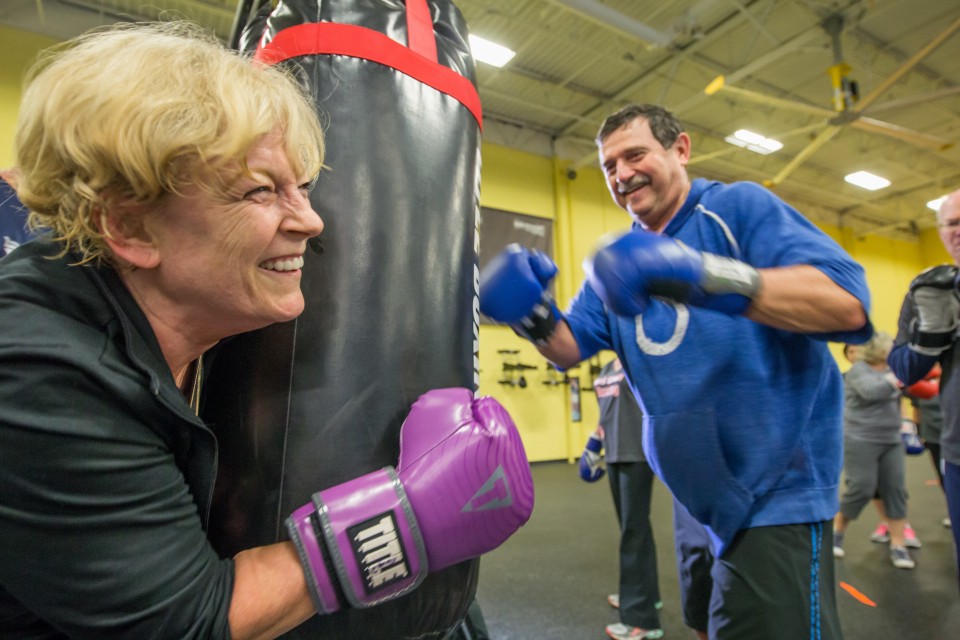Rock Steady Boxing, which now has dozens of chapters in four countries, got its start in an apartment building’s small exercise room after a rising legal star was diagnosed with early-onset Parkinson’s disease.
By Tovin Lapan

Left: Hitting the bags. (Photo: Rock Steady Boxing) | Right: Preparing for a fight. (Photo: Rock Steady Boxing)
Editor’s Note: This piece originally appeared in our September/October 2016 print issue as a sidebar to “Fighting Back Against Parkinson’s.”
It’s called pill-rolling, and if you didn’t know what you were looking for you would probably miss it. Scott Newman had seen it before, and he knew the terrifying implication.
The twice-elected prosecutor for Marion County, which includes Indianapolis, Newman had previously met former United States Attorney General Janet Reno, who suffers from Parkinson’s disease. He noticed she had the tremor, a twitching of the thumb and fingers.
During the closing arguments of a big murder trial in 1999, Newman saw his own hand shaking. At first he brushed it off, but the signs kept coming. His arm grew stiff and stopped swaying when he walked. His typing was getting slower and slower. Newman made an appointment with a doctor, where his fear was confirmed. At age 40, the prominent attorney was diagnosed.
At the time, Newman was thinking of his burgeoning political career, maybe even a run for mayor. With the diagnosis, his priorities shifted to fighting the disease, and he vowed to get into the best shape of his life.


Left: Working out. (Photo: Rock Steady Boxing) | Right: Fighting Parkinson’s in an unconventional way. (Photo: Rock Steady Boxing)


Left: At the gym. (Photo: Rock Steady Boxing) | Right: Group therapy. (Photo: Rock Steady Boxing)
When Newman’s friend Vincent Perez, a cop turned lawyer and former Golden Gloves boxer, found out Newman had Parkinson’s, he offered to work out with him. After his diagnosis, Newman began training in his apartment building’s limited gym. He had never seen boxing equipment there, but on the first day Perez showed up to train with him there was a heavy bag hanging from the ceiling.
“Perez swears he didn’t put it there, so it must have been a coincidence,” Newman says. “But there it was, and, of course, he wanted to use it. That’s how it all started.”
Perez held Newman accountable. When Newman skipped out on training to meet the mother of his new girlfriend, he got an irritated call from Perez asking where he was.

A version of this story first appeared in the
of Pacific Standard.
.
Newman began to notice a difference after six weeks. His stiffness improved. He also started a support group for young Parkinson’s patients; they were the core of what would become Rock Steady Boxing. A friend with an office complex that had an underused employee gym offered to let the group train there.
“The first thing we did was some light stretching,” Newman says. “After a minute everyone was falling over; they looked like bowling pins.”
Rock Steady Boxing grew by word of mouth and incorporated as a non-profit in 2006. It remained a mostly local program for several years, until the organization started offering seminars for trainers to open chapters in new cities in 2012. Today, Rock Steady Boxing has nearly 200 affiliates across the country and chapters in Canada, Australia, and Italy.
“The thing I’m most proud of is how Rock Steady Boxing now has a life of its own and is going all over the world,” Newman says. “If there is some measure of enjoyment, some unit of joy, we have put out millions of those units in these clubs. I’ve done a lot of things. I’ve put away murderers, but there is nothing I’m more proud of than having a part in people being happy to get up in the morning.”





